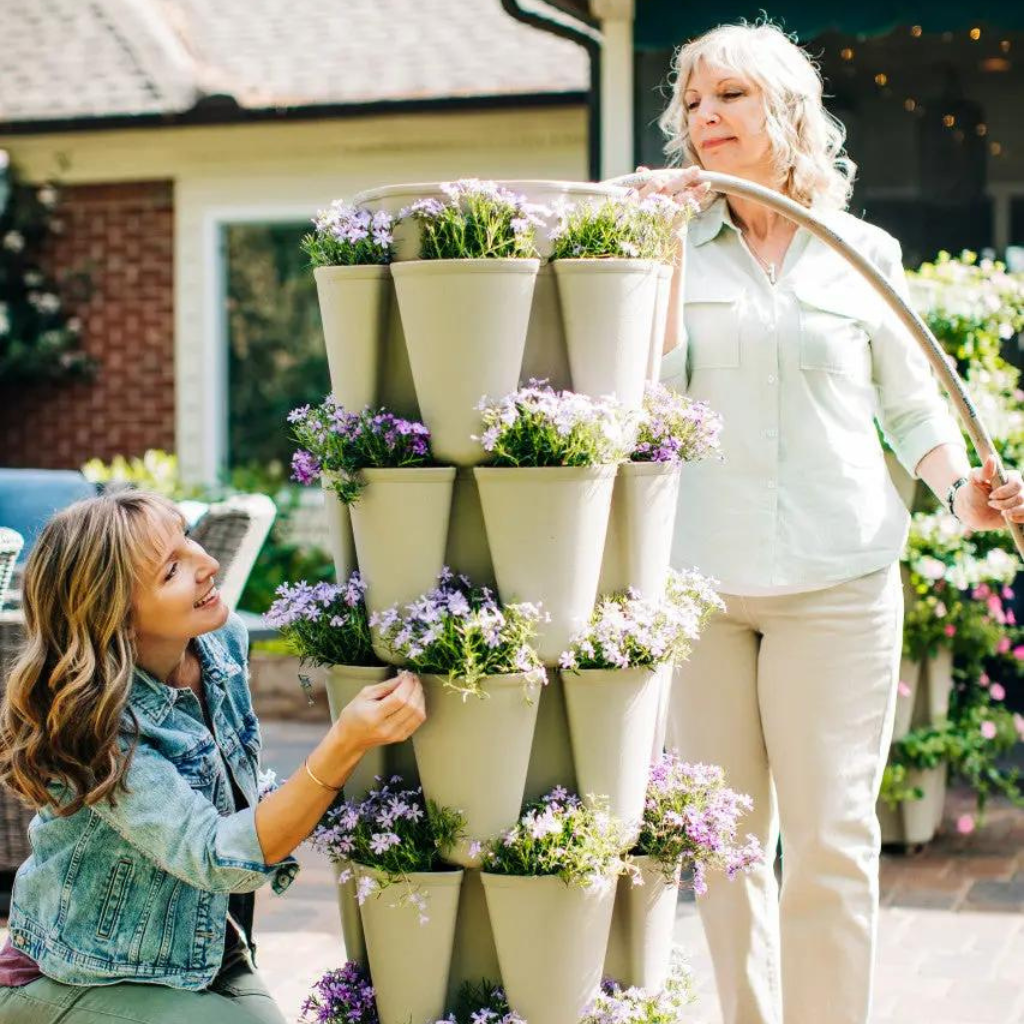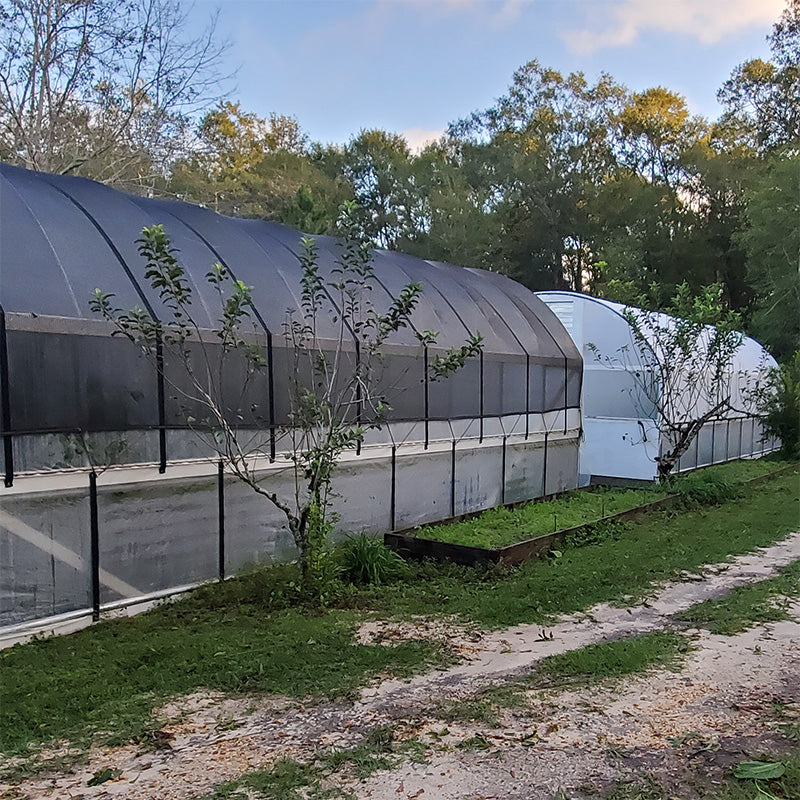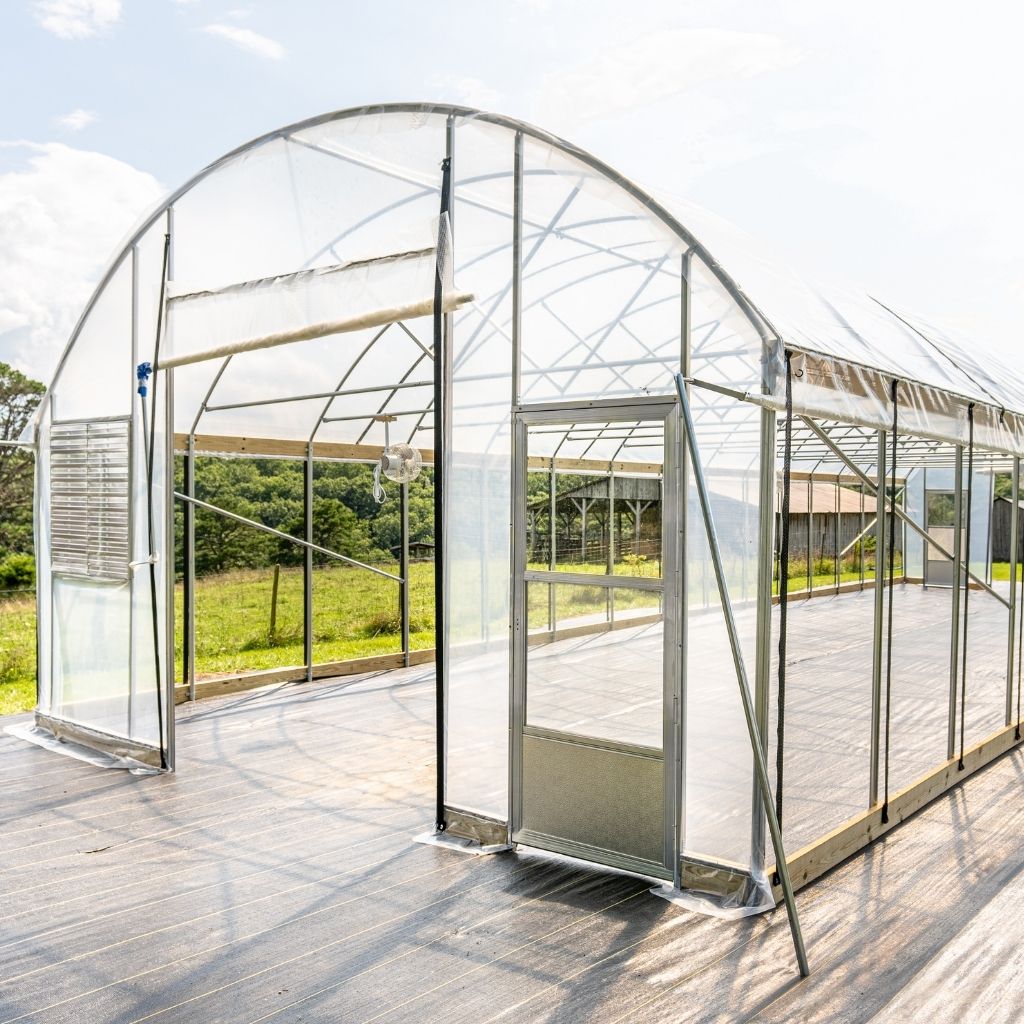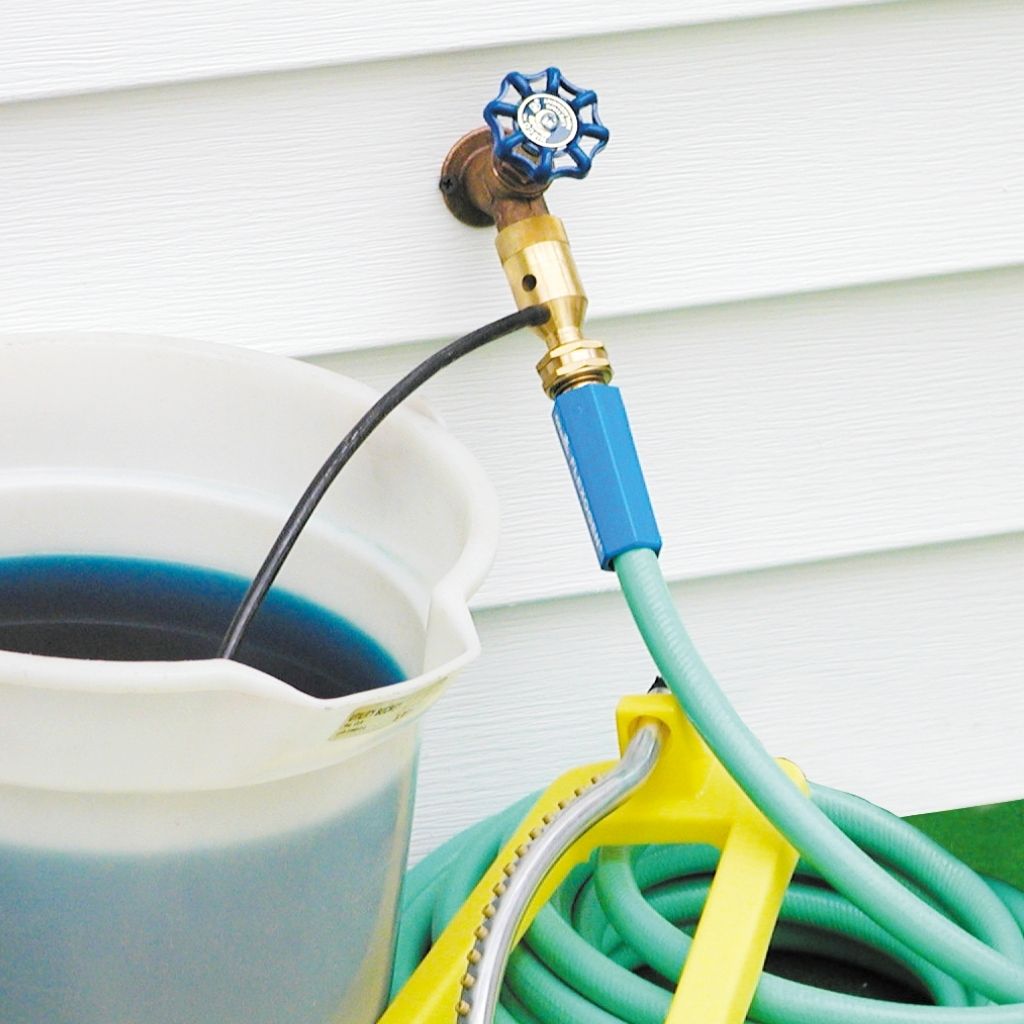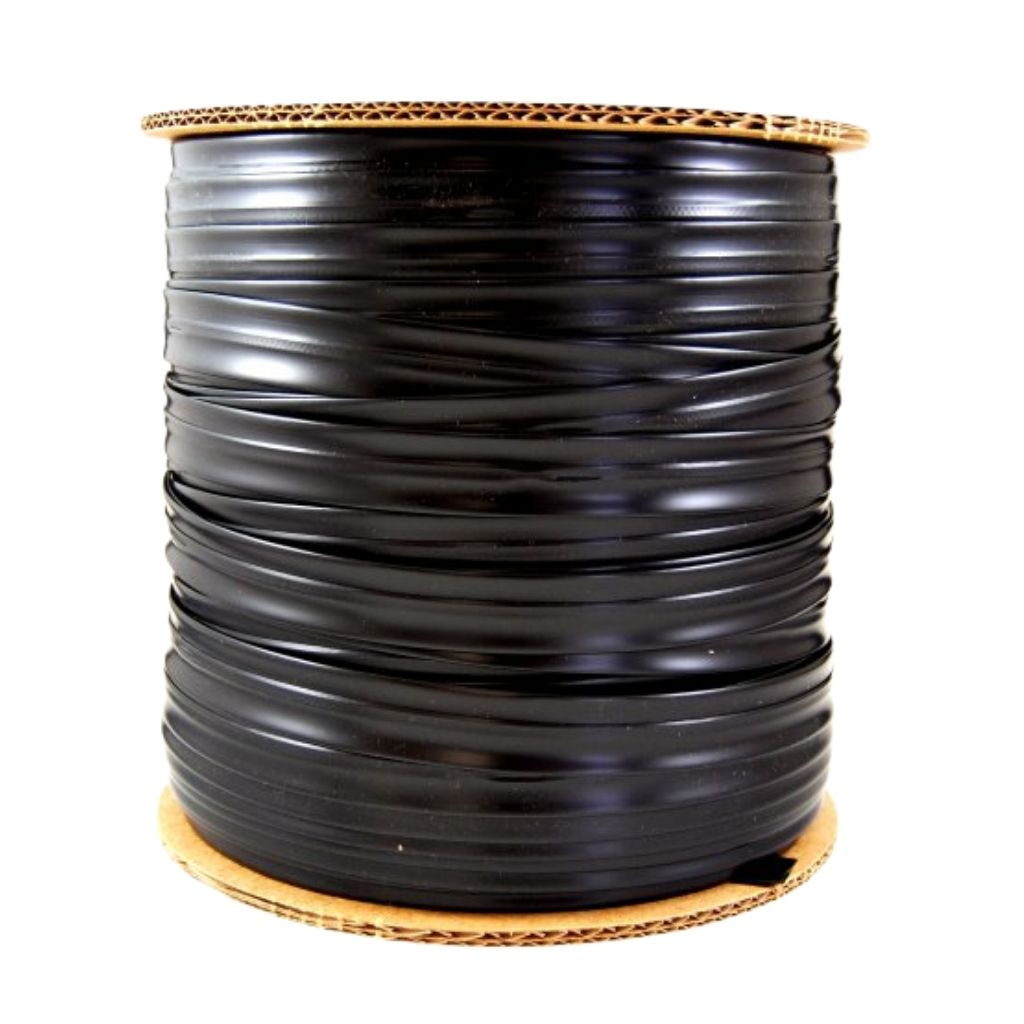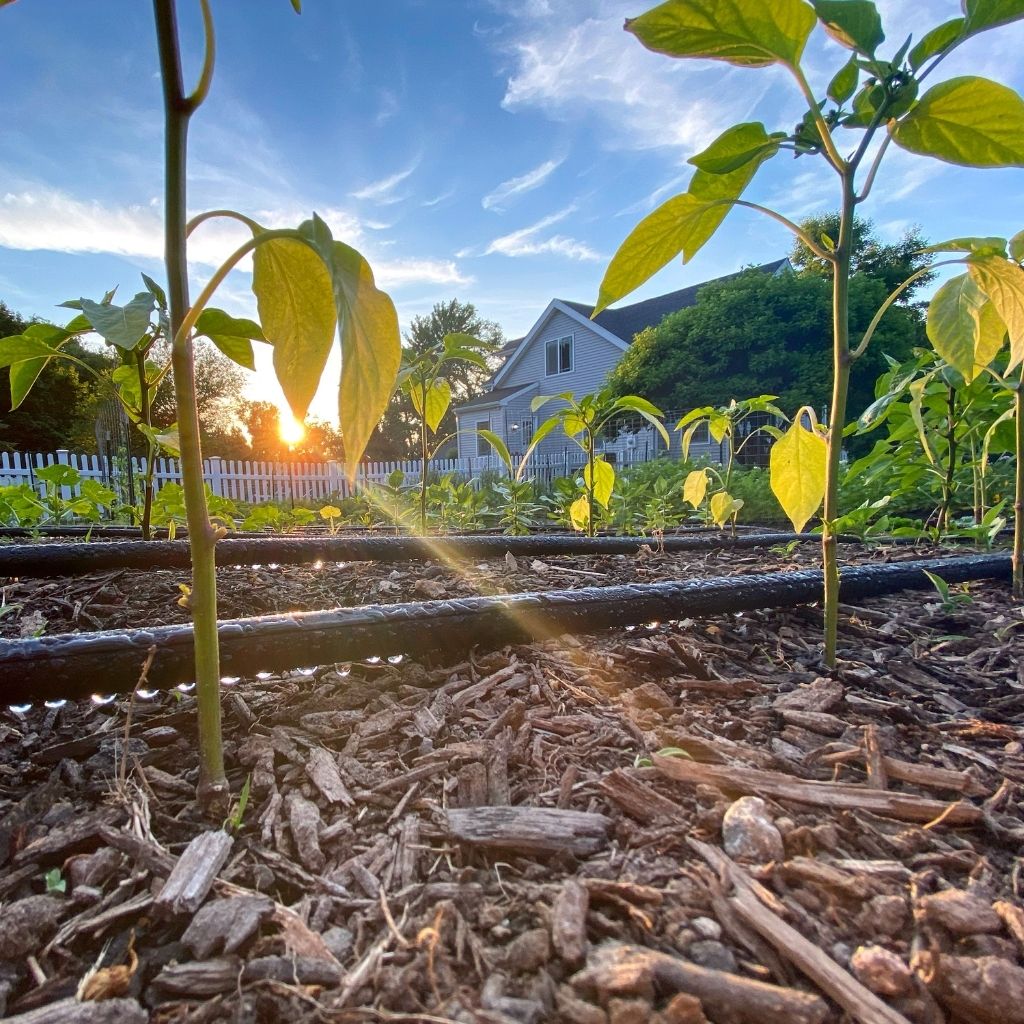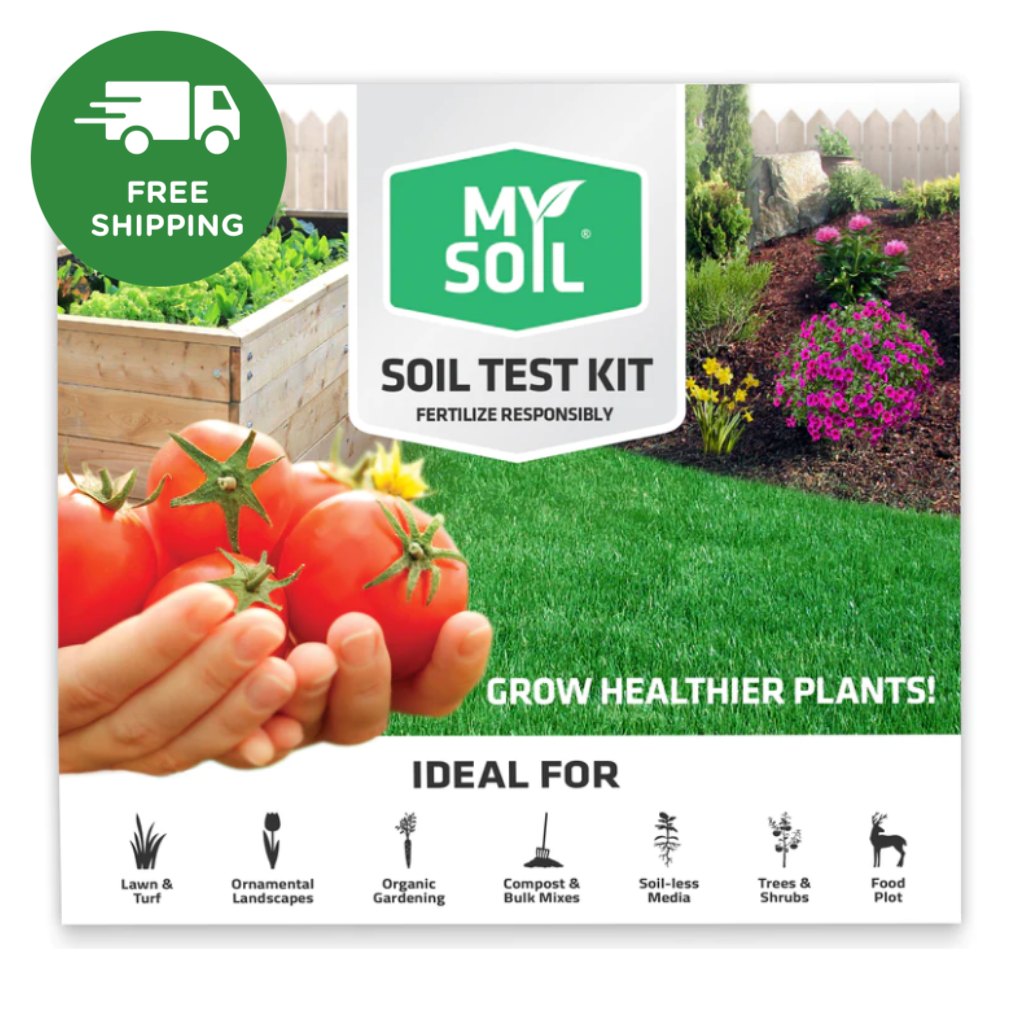Turning over a bed to be healthy and productive for seasons to come!

Harvesting greenhouse crops is as fun as seeding, and watching grow!
This article covers the process of turning over soil beds for replanting the next crop. The tools you will need are trimming sheers, or a knife for harvesting remaining plants, and a shovel for digging.
Begin by harvesting your remaining crops in the bed you plan on over turning. Here we have a rectangular bed formally of green Butterhead lettuce, and mustard greens. I cut at the very base of the plant, trying to save as much edible green as possible.

After you have harvested go around the edge of your garden bed where the pathway and soil bed meet, and with a shovel blade outline the border of your bed. As seen in the picture, I followed the red line indicating the border of the soil bed. Vertically step or jump on the shovel to cut into the border of the soil area (as indicated by the red line in the picture) that you plan to over-turn. Most good shovels bend where the blade meets the handle. Once the shovel blade cuts beneath the soil surface pull back on the handle breaking the dirt free from its existing spot.

Our Butterhead lettuce and mustard greens have a shallow root system that allows us the option to avoid the use of a rototiller, and with just a shovel utilize the existing soil structure with minimal damage. A powdery soil is just as bad as a lumpy, compacted soil. All the work from fungal and bacteria, and plant roots have done through the growing process will be hindered by the tines of a tiller. When your fingers push through the soil, it is best to feel a loose and fluffy texture. The texture is similar to almost any bag of commercial potting soil mixed thoroughly like Numix brand potting soil.

Tillers are useful for the right occasion. This situation requires us to loosen up the soil, by our flipping method. You'll know when to use a tiller, and when to just use a shovel and rake because the soil will either have hard, compacted clumps of clay, or in this example a soil that has been recently tilled is good for a few seasons which allows us to just 'flip' the soil with a shovel. The scoop you cut out of the ground just simply needs to be flipped-over, and cut up with the blade as shown in this photo. With a rake, spread out evenly. You might want to throw on top of the freshly over turned bed some worm castings, sand, potting mix, or other soil amendments to continually improve the soil structure. Remember that the remains of the old crop can be useful as a green manure as it decomposes beneath the new surface of soil.

Doing this allows us to access nutrients yet untapped by the plants, provide aeration, and is a quick way to clean up the mess from harvesting the prior crop. The old bed is ready for seed.




